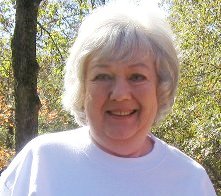
The Original Pineville
The original Pineville was rough and woolly despite the efforts of circuit riders. Alcohol was an important part of many early settlers' culture. As they moved west from North Carolina, Virginia, Tennessee, and Kentucky, they brought their “corn crackers” and made moonshine dip pin’ whiskey. It was a profitable business and an early version of a “value-added” enterprise.
But alcohol-fueled more than a warm glow. It made violence no
stranger to the little town. Pineville was located about 15 miles from
the Indian Territory. There was no shortage of customers and if trouble
arose, the miscreants simply hied off to the Territory until things
cooled down.
On March 29, 1879, the Farmer & Chenoweth store was
burned in a protest against alcohol. Later, Dr. Chenoweth was
assassinated by Garland Mann. Mann was later lynched by an angry mob who
broke into the Neosho jail where he had been thought to be safe.
The conflict between the “wets” and “drys” raged for years.
Enter Lora LaMance, the wife of a prominent merchant. Among
her many activities, was her ardent campaign against liquor. She became
the local, then county president of the Women’s Christian Temperance
Union (WCTU).
She wrote a genealogy book that reported proudly that she put
on a hot campaign and took the county dry by local option. She went on
to become the National President of the WCTU where she was an organizer
and lecturer.
In her book she wrote “…in 21 years she has traveled over a
half-million miles, spoken in every state and in every Canadian province
but two and has visited over fifty countries.
After Mrs. LaMance’s efforts, alcohol was banished from
public view. However, more than one prominent figure was known to
quietly keep a bottle somewhere in his office.
Moonshine is still available if you have the right connections





No comments:
Post a Comment